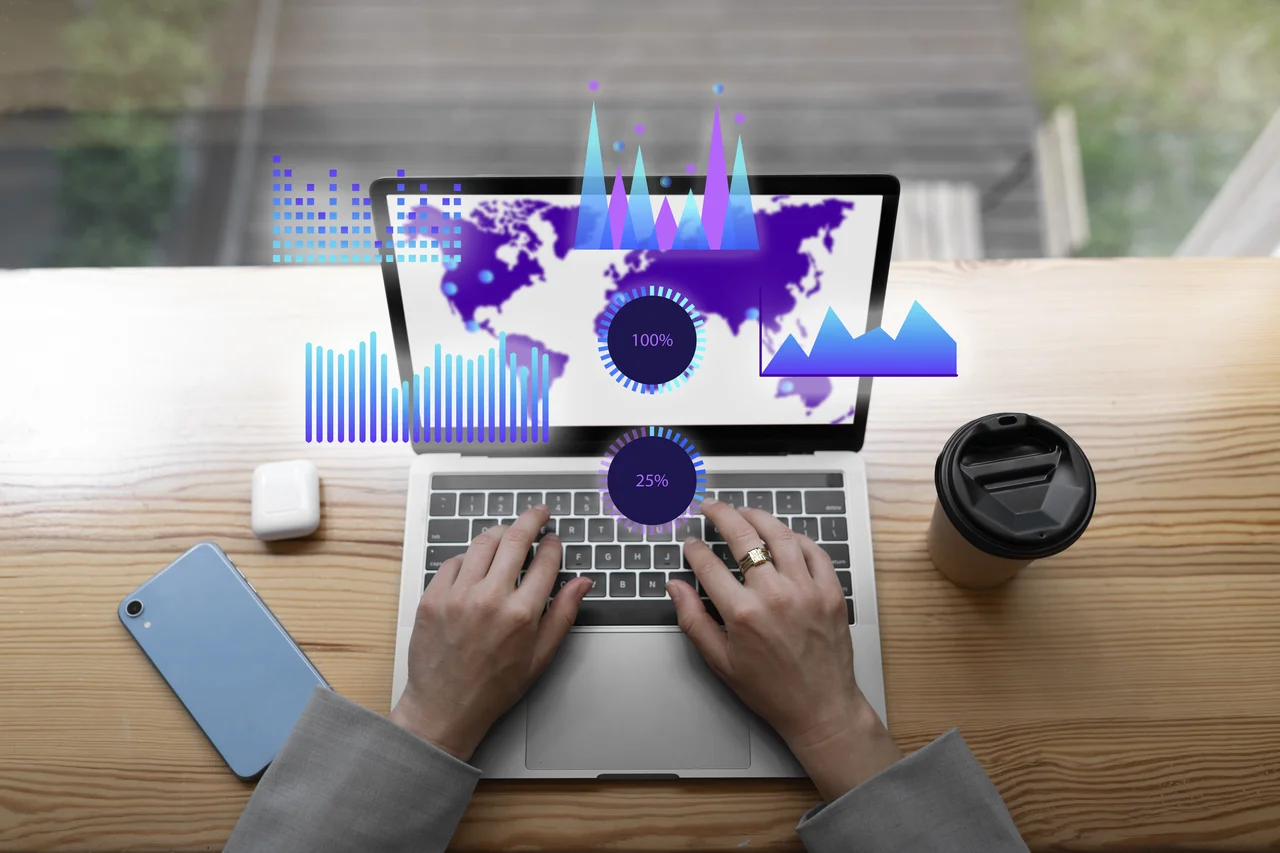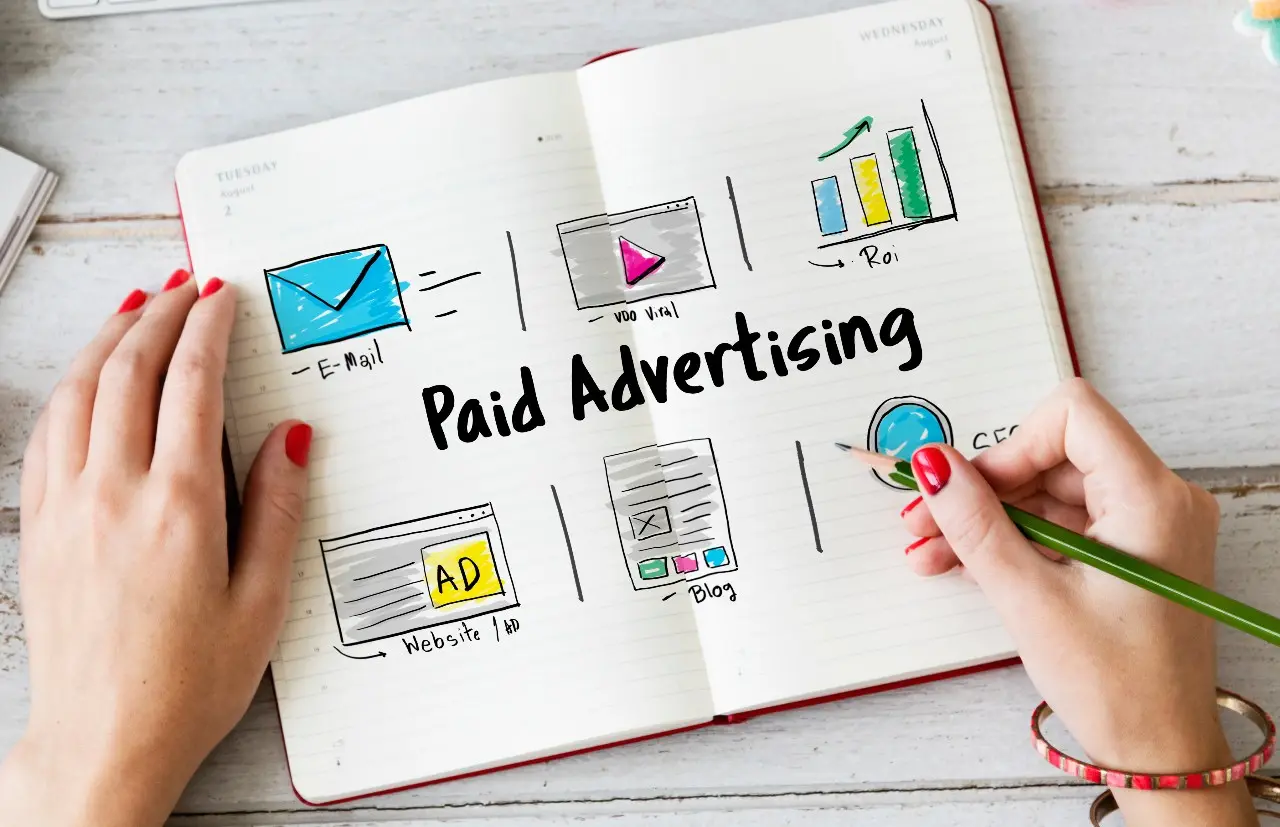Listen to article
In an era where content overload is the norm, B2B marketers are constantly seeking ways to maximize the reach and impact of their content efforts. One of the most effective strategies is content repurposing.
Content repurposing allows B2B marketers to transform existing content into different formats, extending its lifespan and reaching new audiences across various channels, and, ultimately, improving lead generation, brand awareness, and revenue.
But is content repurposing truly worth the investment?
This article dives deep into the world of B2B content repurposing, offering valuable b2b content repurposing statistics, actionable insights, and practical tips to help you make the most of your content strategy. Let’s explore the power of repurposing and discover how it can help you achieve your business goals.
Maximizing Impact: Short-Form Video and Mobile Trends in Content Strategy
If there’s one undeniable truth in today’s content landscape, it’s that video has become a cornerstone of engagement. But not just any video—short-form, punchy, and mobile-optimized videos are leading the charge. With mobile devices now acting as the premier stage for video consumption, it’s not just about creating content but designing experiences that align with consumer habits. The stats below reveal why focusing on mobile-friendly, short-form videos could be the key to driving brand visibility, lead generation, and customer loyalty.
- Social media posts with video dominate engagement: Posts featuring video enjoy 48% more views and are shared 1,200% more often than text-and-image posts. Source
- Short-form videos hold attention: 50% of viewers watch short-form videos (less than 90 seconds) in full, perfect for capturing audiences on ads and social feeds. Source
- Video drives traffic: 86% of marketers report increased website traffic due to video content. Source
- Boost to dwell time: 83% of marketers note longer website visits due to video. Source
- Online video dominates web traffic: It made up 82.5% of all web traffic in 2023. Source
- Social video converts: 93% of brands report gaining customers through social media videos. Source
- Video ads drive purchases: They are the #1 discovery-to-purchase driver for new brands. Source
- Lead generation thrives with video: 90% of marketers say video effectively generates leads. Source
- Video-enriched blogs perform better: Blogs with embedded videos receive three times more inbound links. Source
- Mobile is where video lives: 70% of video views happen on smartphones. Source
- Mobile fuels sharing: 92% of mobile viewers share videos they watch. Source
- Social platform mobile dominance: 93% of X (formerly Twitter) video viewers use mobile. Source
- YouTube on mobile: With 500 hours of video uploaded per minute, 70% of views happen via mobile. Source
- Mobile drives social virality: 92% of videos shared on social media originate from mobile views. Source
- Preferred by B2B marketers: Over 50% of B2B marketers favor videos and infographics for engaging audiences. Source
- B2B video investments are growing: 65% of B2B marketers plan to ramp up video content production. Source
- Short-form delivers ROI: 55% of B2B marketers see the highest ROI from short-form, social videos over formats like webinars or case studies. Source
Why It’s Time to Double Down on Mobile-Friendly Video
The data doesn’t lie: short-form and mobile-optimized videos are no longer just “nice to have”—they’re essential tools for content creators and marketers alike. With mobile reigning as the dominant platform, brands need to make their videos snackable, scroll-stopping, and easy to share. This focus on mobility extends beyond consumer brands—B2B marketers are increasingly embracing video to humanize their message and deliver value in an attention-scarce world. To stay competitive, repurpose existing content into highly shareable video formats and prioritize accessibility across devices.
Pro Tip:
Don’t let your valuable content sit idle. Leverage tools like Veed.io or Canva to repurpose blog posts, webinars, or podcast snippets into short video highlights for social media. Add compelling captions or subtitles to ensure your videos perform equally well on sound-off platforms, and always end with a strong call-to-action to guide your audience to the next step.
Mastering Content Distribution: Insights from B2B Marketers
In B2B marketing, great content is only as impactful as its distribution strategy. Whether it’s building thought leadership or driving lead generation, selecting the right mix of channels and formats can amplify your content’s effectiveness. But it’s not just about choosing popular platforms like LinkedIn or email; the real power lies in diversifying your distribution tactics while keeping your audience’s behavior at the forefront. Dive into these key statistics that reveal how B2B marketers are leveraging specific channels and formats to stay ahead in a content-saturated landscape.
- An average of 92% of B2B marketers use social media for content distribution, with LinkedIn leading as the primary platform, while Facebook, Instagram, and Twitter also offer valuable results. Source
- Social media is a top channel in B2B: Social media is the leading content distribution channel in B2B marketing, with 90% of marketers utilizing it. Source
- LinkedIn leads the way: 78% of B2B marketers consider LinkedIn the most effective social media platform for their content. Source
- 60% of B2B marketers consider social media the top channel for generating revenue. Source
- 75% of B2B marketers report that social media is their most frequently used channel. Source
- 84% of B2B marketers find LinkedIn to be the most valuable organic social media platform, significantly ahead of Facebook (29%), YouTube (22%), and Instagram (21%). Source
- 72% of B2B brands have increased their use of LinkedIn in the past year. Source
- Many B2B brands are expanding their presence on other platforms as well, with 32% increasing their focus on YouTube, 31% on Instagram, and 22% on Facebook. Source
- Looking to the future, 27% of B2B marketers plan to start using YouTube for the first time in 2024. Source
- 85% of B2B marketers agree that LinkedIn delivers the best value, followed by Facebook (28%), YouTube (22%), and Instagram (21%). Source
- Email is still king for B2B: 93% of B2B marketers use email to distribute content. Source
- Blogs remain important: 79% of B2B marketers use blogs as a distribution channel. Source
- In-person and virtual events are valuable: 56% of B2B marketers distribute content through in-person events, while 55% use webinars, webcasts, or virtual events. Source
- Variety is key to success: The most successful B2B content marketers use an average of five formats to distribute content, compared to the least successful who use only four. Source
Takeaway: A Balanced Approach Wins Every Time
The data underscores a fundamental lesson for B2B marketers: no single channel or format can guarantee success. LinkedIn may dominate the industry as a trusted distribution platform, and email continues to remain indispensable, but the best results come from layering diverse formats—blogs, webinars, and even newer tools like YouTube. As audience preferences shift, marketers must remain agile, harnessing real-time insights to fine-tune content strategies. By optimizing your presence across multiple platforms and leveraging tools that prioritize engagement, you can ensure your content not only reaches your audience but also drives meaningful action.
Pro Tip:
Invest in platform-specific content strategies. For instance, use LinkedIn for thought leadership articles and professional polls, Instagram for behind-the-scenes visuals, and YouTube for educational explainer videos. Additionally, for a more holistic approach to content distribution and overall marketing effectiveness, partnering with full-service marketing providers can help streamline efforts across multiple channels. This approach not only diversifies your distribution but also builds deeper connections with your audience where they’re most active.
Amplify B2B Engagement with Blogs and Emails: Insights Backed by Data
In the world of B2B content marketing, creating high-impact blogs and crafting strategic email campaigns are more than complementary efforts—they’re powerhouse strategies for driving engagement, leads, and revenue. By repurposing blogs into email newsletters or adapting them for social media, marketers can breathe new life into existing content while reaching audiences across multiple touchpoints. This seamless integration not only saves time but also ensures that valuable insights are consistently delivered to your audience.
- Blogging is embraced by 75% of B2B marketers for social media content, compared to 61% of B2C marketers. Source
- A noteworthy 59% of B2B marketers cite blogs as their most valuable form of content. Source
- Companies with blogs see 55% more website visitors, 97% more inbound links, and a 434% rise in indexed pages. Source
- Roughly 53% of marketers rank blog content creation as their leading inbound marketing priority. Source
- Social media promotion is integral to blogging, with 90% of bloggers using these platforms to amplify reach. Source
- Over half (52%) of B2B marketers believe blogging is the most critical tactic for achieving content marketing success. Source
- Email newsletters are an essential content marketing method for 81% of B2B marketers. Source
- Approximately 79% of B2B agencies consider email their most successful content distribution channel. Source
- Email remains the preferred communication method for 77% of B2B buyers. Source
- Around 73% of marketers report that email newsletters are central to their content marketing efforts. Source
- Email automation is used by 82% of marketers, driving an 8x increase in open rates. Source
- With 4.6 billion email users expected by 2025, email marketing is twice as effective as paid ads for lead generation, according to 59% of marketers. Source
- Email marketing is projected to generate $13.69 billion in revenue by 2025, up from $7.5 billion in 2020. Source
- Half (50%) of U.S. B2B marketers find email marketing the most impactful channel in their multichannel strategies. Source
- Personalization in email campaigns, including dynamic content, enhances performance for 80% of marketers. Source
- Dynamic content alone is reported to improve email outcomes by 68%. Source
- Behavior-triggered emails generate 10x more revenue than standard emails. Source
- Targeted messaging improves results for 90% of marketers. Source
- AI-powered hyper-personalization is expected to make a significant impact on email automation for 39% of marketers. Source
Takeaway: Synergy Drives Success in Content and Email Marketing
The numbers reveal a clear message: repurposing content is not just smart—it’s essential. By leveraging blogs to fuel email campaigns and vice versa, B2B marketers can build a cohesive strategy that drives results across platforms. Blogging boosts SEO and organic traffic, while email marketing fosters closer connections and nurtures leads. Combining these two channels amplifies your reach and impact, offering a cycle of value by continually engaging your audience at multiple touchpoints.
Pro Tip:
Transform your best-performing blog posts into downloadable resources, like whitepapers or eBooks, to use as lead magnets in your email campaigns. Additionally, invest in tools that support hyper-personalization and behavior tracking to deliver timely, relevant emails that convert.
How Strategic Content Repurposing Fuels Long-Term Success in B2B Marketing
For B2B marketers, creating a steady stream of fresh, engaging content can often feel like an uphill battle. This is where content repurposing becomes a game-changer—not just a time-saving tactic but a powerful strategy for maximizing ROI. Instead of letting valuable content fade into obscurity, repurposing extends its lifespan while boosting visibility, lead generation, and bottom-line impact. In fact, the numbers below demonstrate just how pivotal content marketing, when done strategically, can be in transforming how B2B companies grow.
- B2B companies that consistently blog experience a 67% increase in monthly leads compared to those with irregular blogging habits. Source
- 84% of B2B marketers reported that their content marketing efforts successfully built brand awareness in the past year. Source, Source
- 76% of B2B marketers find that content marketing effectively supports their demand and lead generation initiatives. Source
- A notable 58% of B2B marketers believe that content marketing contributed to increased sales and revenue in 2024, marking an increase from 42% in 2023. Source
Clearly, repurposing content is more than just a “nice-to-have” strategy; it’s a necessary approach for gaining competitive advantage in today’s saturated B2B landscape. By reimagining existing content—whether transforming a webinar into a blog series, a white paper into social media posts, or a how-to guide into an infographic—marketers can meet their audiences where they are while optimizing resources.
Repurposed content also works exceptionally well across multiple digital marketing channels. For example, turning a blog post into an email newsletter or a series of LinkedIn posts can help B2B companies tap into diverse platforms, amplifying their reach. This strategy aligns perfectly with a B2B website strategy that integrates content marketing as a core component to engage audiences and drive conversions effectively.
Pro Tip:
Not all content deserves a second life. Focus on repurposing evergreen or high-performing pieces that consistently drive traffic, leads, or engagement. Advanced analytics tools, like Google Analytics or HubSpot, can help you identify which content has the most potential for repurposing across multiple channels, ensuring you get the most impact with fewer resources.
Conclusion
Conclusion: Elevating Your Strategy with Content Repurposing
The data speaks volumes—content repurposing is not just a smart strategy, it’s a necessity for B2B marketers aiming to remain competitive in an increasingly digital marketplace. From short-form videos driving massive engagement on social platforms to blogs and email campaigns generating leads and revenue, the statistics highlight the immense potential of reimagining your content for maximum impact. By aligning your efforts with proven trends, such as leveraging video for mobile, utilizing LinkedIn for distribution, and prioritizing email personalization, you can amplify your reach and deliver measurable results.
But success lies not only in creating content, but in strategically adapting it to your audience’s preferences across multiple channels. Whether it’s repurposing a blog into an engaging infographic or turning a webinar into bite-sized video clips, the possibilities are endless. Ready to see how repurposing can redefine your content strategy? If you’re ready to supercharge your business, don’t hesitate to get in touch with our full-service marketing pros for a free quote. Let’s transform your content into a lead-generating, brand-building powerhouse.
About Repurposing Content Across Channels: What the Stats Suggest
This article was written by the Scopic Studios team and reviewed by Araksya Hakobjanyan, SEO Lead at Scopic Studios.
Scopic Studios delivers exceptional and engaging content rooted in our expertise across marketing and creative services. Our team of talented writers and digital experts excel in transforming intricate concepts into captivating narratives tailored for diverse industries. We’re passionate about crafting content that not only resonates but also drives value across all digital platforms.
Note: This feature blog’s image are sourced from Freepik.































































































































































































































